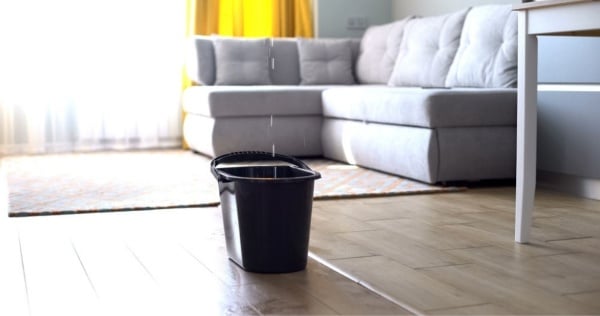Anyone who has a polycarbonate conservatory roof knows they can leak.
Roof leaks cause all sorts of problems – and some are not just confined to your conservatory!
In this post we examine:
- Why polycarbonate conservatory roofs are so prone to leaking.
- What you can do to fix this issue.
- Why you should fix your leaking polycarbonate conservatory roof.
Let's dive right in...
Why do polycarbonate conservatory roofs leak?
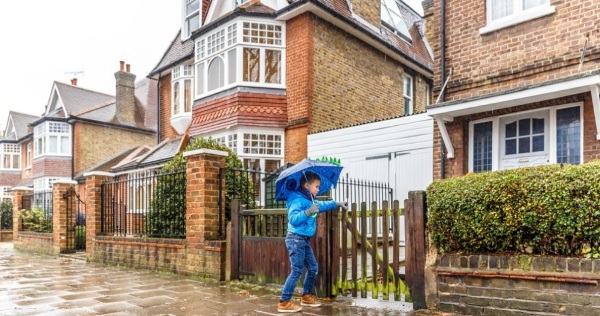
Most people who have a polycarbonate conservatory roof can attest to how difficult they are to maintain. Mould growth, condensation and general deterioration of the roof can all be the result of frequent leaks in the conservatory roof structure.
One leakage problem can quickly multiply into several issues, each making the others worse – until your conservatory is all but unusable.
Polycarbonate roofs are just one type of roof that you can have installed in your conservatory. Unfortunately, these models tend to be particularly prone to letting in moisture.
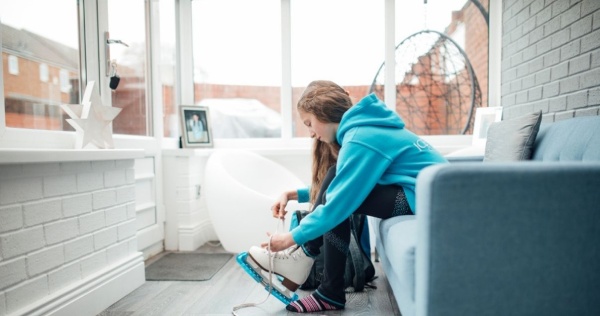
Let’s examine the 5 main reasons why:
1. Broken seals or leaky flashing
Polycarbonate conservatory roofs are made by building a roof structure and affixing plastic panels onto it.
The polycarbonate roof panels are secured into the structure with sealing and flashing. Both can wear down over time, causing leaks between panels and the roof frame.
2. Panels sliding
Over time polycarbonate panels can slide down. This leaves gaps in the roof, letting water leak in.
3. Extreme weather conditions
Adverse weather like heavy wind and rain can loosen seals in the roofing panels, causing gaps for water to seep through.
Debris such as twigs and branches can inflict significant damage to your roof when flying around at high speeds during storms.
Though less common, hailstones can wreak havoc on your conservatory roof. Polycarbonate is not scratch resistant, so a particularly vicious hailstorm could leave thousands of ugly marks on the roof, as well as cause damage that lets moisture through.
4. UV damage compromising the roof’s integrity
Polycarbonate is a synthetic material, and like other plastics it can be affected by long periods under direct sunlight. Ultraviolet rays can cause the panels to chemically degrade through long exposure.
This is similar to the whitening effect on some plastics after periods in sunlight. Polycarbonate can discolour and haze under UV rays, and weaken the overall structure within just 5-7 years.
5. Poor workmanship
Regardless of the material, many conservatory roof problems happen because they’re not installed properly.
If an overconfident jack-of-all-trades doesn’t fit your polycarbonate roof perfectly, you could be paying for his or her poor workmanship later down the line.
All it takes is a tiny gap in the panelling or a loose bit of sealing for water to leak through.
Reasons to fix leaks
The beauty of a conservatory is being able to enjoy the surroundings of your garden while staying comfortable, warm and dry.
But if your polycarbonate conservatory roof leaks, you’ll eventually have more trouble than just a bit of moisture getting in.
Here’s what leaks can lead to:
Mould
Black mould growth is a common problem with polycarbonate roofs. This unsightly fungus loves moisture, and can quickly grow into a big health hazard.
Mould needs to be removed quickly to prevent health problems for people using the conservatory. Fixing the leaky roof is the best long-term solution.
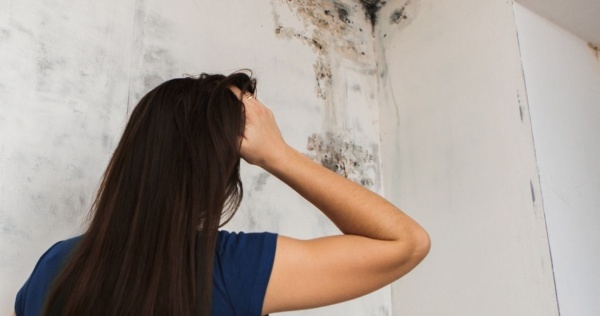
Damage to the rest of your home
It’s not just the conservatory that can be affected by a leak. Depending on the location, moisture can enter your home, into adjoining walls, ceilings and other parts of the property.
Water damage is no joke. It can go deeper than just the surfaces and be costly to repair if it gets into your property.
Slips and falls
A serious leak can cause water to accumulate on the floor, collecting into puddles and slicks. This is a real hazard to occupants who might slip and fall.
Electrical concerns
Electricity and water famously do not mix. Most modern conservatories have some sort of electrics fitted, whether it’s wall sockets or, more commonly, roof light fittings.
Water in the wiring can cause substantial and dangerous electrical problems. Don’t let the roof leak get that far!
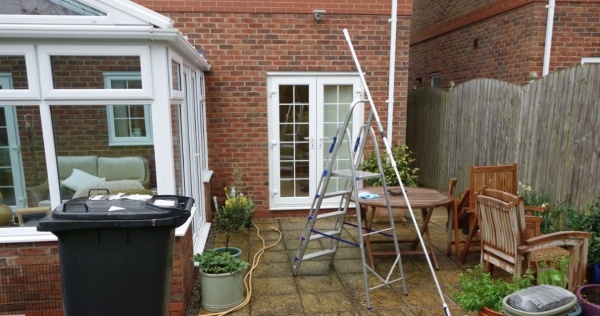
Solutions
As you can see, fixing a leaking conservatory roof is not only a matter of comfort, it’s a health and safety priority.
The quicker you nip leaks in the bud, the fewer problems will develop and cause you further grief.
But what can you do to fix a leaky conservatory roof? There are a few options:
Tape, glue, patches, etc.
A short-term sticking plaster solution – literally! A root around in the DIY box for a bit of duct tape will stop a drip for a few weeks if you’re lucky.
However, in the event of serious weather or as a longer-term answer, this is not an effective strategy.
Replacement polycarbonate conservatory roof
Getting a professional to address your leaky roof is a better plan.
However, if they suggest replacing your whole roof with a new polycarbonate covering you’re not only going to be spending a lot of money, but you’ll be dealing with the exact same problems all over again!
With polycarbonate conservatory roofs, it only takes is a minor imperfection and water will find a way in – leaving you with the exact same problems.
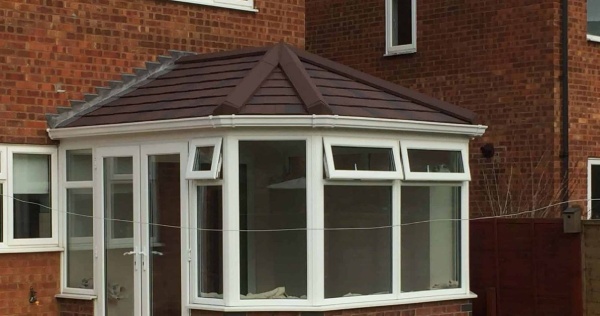
Guardian Warm Roof conversion
A persistent leak in your polycarbonate conservatory roof needs a trustworthy solution. The Guardian roof gives you a solid roof conservatory that eliminates all the causes of leakage that polycarbonate panels are prone to.
The Guardian Warm Roof has layers of conservatory insulation to keep heat in and moisture out. As a result, a Guardian insulated roof protects your conservatory from drastic temperature changes in all seasons, be it hot summer days or cold winter nights so it becomes an all year round living space.
Guardian Roofs also come in a range of durable, lightweight, attractive slates and tiles to protect your conservatory for years to come.
That’s why we believe a conservatory roof conversion, replacing your polycarbonate roof with a solid roof is by far the best and most comprehensive option.
Best yet, since the components of your Guardian Warm Roof are measured and prepared ahead of time to your conservatory's exact specifications, the installation is far more efficient and far less intrusive than many other kinds of roofing installations. The whole process takes an average of only 7 days!

Conclusion
A conservatory roof conversion is a big job, but well worth the investment compared to constant, short-term fixes.
A Guardian Warm Roof, fitted by properly trained, expert roofers will be watertight from the first day of installation, and prevent leaks for many years. In fact, we offer a 20-year installation guarantee based on the quality of the product and our installation team.
To find out more about the Guardian roof system and for a fixed price quote from Projects 4 Roofing, get in touch for a free consultation.


